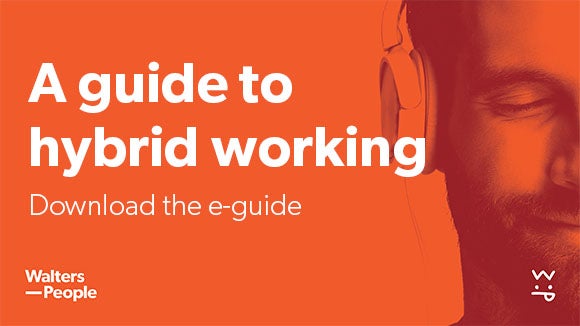Your new hire is geared up to start, but what will their induction look like? In the Walters People remote onboarding series, we support employers looking to onboard talent from home during turbulent times.
Providing a structure will be crucial to ensure a smooth onboarding - here is 7 tips to map out your new recruit’s first few weeks working from home.
Send a weekly itinerary
Provide a sense of routine from the outset by sending an induction timeline for the first couple of weeks – and try and send this before day one. Include all scheduled activities such as training sessions, one-to-ones and free up enough time to work on specified tasks. The first week is about easing them in and getting them up to speed quickly, so it’s important to have some initial and immediate workload, on top of the training and introductions. Send diary invites for everything you schedule in to help your new hire structure their working week.
Inform the wider business
Send out a short email to the wider company, the office or appropriate teams introducing your new starter. This could include some information about the individual’s career background, their role in the company, and something personal which people can then use as a conversation starter – such as ‘yoga enthusiast, ‘keen traveller’ or ‘mountain climber’ – and importantly, include the new starters email in the body of the text.
Introduce informally
Schedule an informal team call to introduce and celebrate your new addition. Make this a social call – it’s more about putting names to faces and breaking the ice than assigning tasks.
You need to provide support in every sense to help your new recruit to reach that familiarity and level of comfort that organically occurs in an office environment.
Schedule one-to-ones with individual team members and stakeholders to talk over more specific responsibilities and provide training using screen-sharing technology such as Skype or Microsoft Teams.
Schedule daily update calls
Set clear, daily expectations during calls so your hire knows what to focus on throughout the day and can plan out their activities accordingly. Over time, your new recruit will build more understanding and naturally will work more independently. As a result, you’ll find these check-in meetings will become less frequent, but more productive and efficient.
Widen your induction training programme
Think about all the processes you may need to provide training on to support your new recruit in performing their job. This may include things you deal with as they come up in an office setting, such as accessing the company intranet, accessing templates and key files, or bookmarking sites they will use on a regular basis.
Be mindful and supportive
From checking in regularly, providing mentorship, to creating a safe space for honest and relaxed communication, you need to provide support in every sense to help your new recruit to reach that familiarity and level of comfort that organically occurs in an office environment.
Check out our top tips to make your new recruit feel empowered when starting a job from home.
Request feedback
Once your employee has settled in, ask them what could be improved with the onboarding process. Perhaps they could have benefited from a more organised system, or would have appreciated fewer meetings and more downtime to familiarise themselves with tasks. It’s important to take into consideration how different personality types may react to a novel experience, and you won’t be able to improve your process if you don’t ask.
Digital onboarding is a learning curve for all parties, so there are bound to be teething issues when implementing it for the first time. Taking the steps to provide an organised, interactive and stimulating employee induction will keep you on the right path to providing a seamless onboarding experience.
Is your business remote-ready? Take a look at our tips to prepare your business for remote working.













